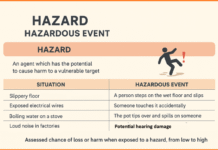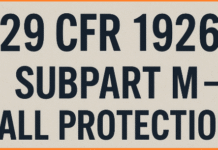The hazardous chemicals/dangerous goods are divided by United Nation Committee of Experts on the Transport of dangerous goods into the following classes:
- CLASS 1 : Explosive
Division 1 – Substances and articles which have a mass explosion hazard.
Division 2 – Substances and articles which have a projection hazards but not a mass explosion hazards.
Division 3 – Substances and articles which have a fire hazard and either a minor blast hazard or a major projection hazard or both,
but not a mass explosion hazard.
Division 4 – Substances and articles which present no significant hazard.
Division 5 – Very insensitive substances which have a mass explosion hazard.
CLICK HERE FOR ? MATERIAL SAFETY DATA SHEET (MSDS)
CLASS 2 : Gases compressed, liquefied, dissolved under pressure or deeply refrigerated.
CLASS 3 : inflammable liquids.
CLASS 4 : Inflammable solids, substances liable to spontaneous combustion substances which on contact with water emit inflammable gases.
Division 4.1 – Inflammable solids.
Division 4.2 – Substances liable to spontaneous combustion.
Division 4.3 – Substances which on contact with water, emit inflammable gases.
CLASS 5 : Oxidising substances, organic peroxides.
Division 5.1 – Oxidising substances.
Division 5.2 – Organic peroxides.
CLASS 6 : Poisonous (toxic) and Infectious substances.
Division 6.1 Poisonous (toxic) substances.
Division 6.2 Infectious substances.
CLASS 7 : Radioactive substance.
CLASS 8 : Corrosives.
CLASS 9 : Miscellaneous dangerous substance.
See IS:1446 for classification of dangerous goods.
Arrangement for loading and unloading of the liquid have to be well designed. It is preferred to load toxic and flammable material from the bottom. It is preferable to provide a discharge pump on the tank.
CLICK HERE FOR ? Industrial toxicology
Drums, crates and cylinders are also transported by trucks. The important thing to see is that the chemical is securely packed so that spillage do not occur on the road and the toxic vapours are not released.
CLICK HERE FOR ? Safe Handling and Storage of Chlorine
The cylinders or drums should be securely lashed so that they do not fall off the truck and cause danger. The driver and the attendant should be fully conversant wiyh the nature of the material and the hazards involved and trained to handle the situation.
CLICK HERE FOR ? Safe Handling and Storage of Ammonia







Good morning honourable member, I hope you had a wonderful sleep, Sir I’m Thomas Mthethwa requesting the UN numbers of all nine dangerous goods classes for my information please Sir,
Thank you in advance for your assistance regards
Thomas Mthethwa
0835800965